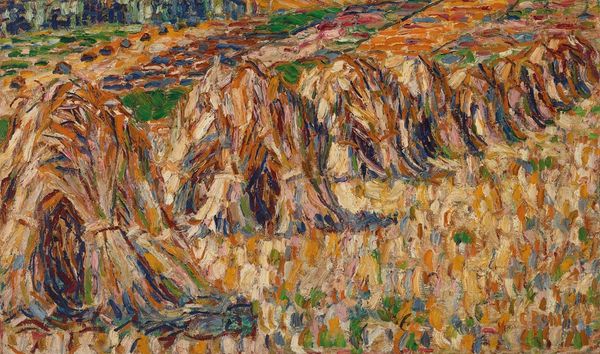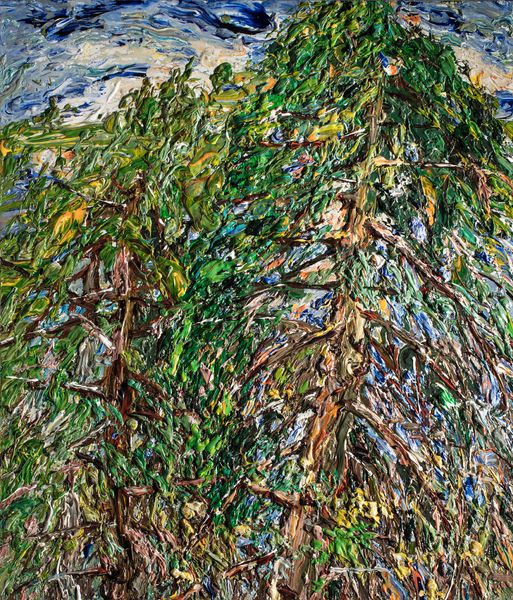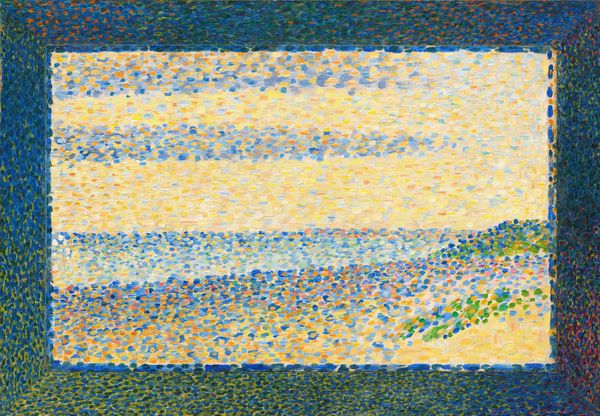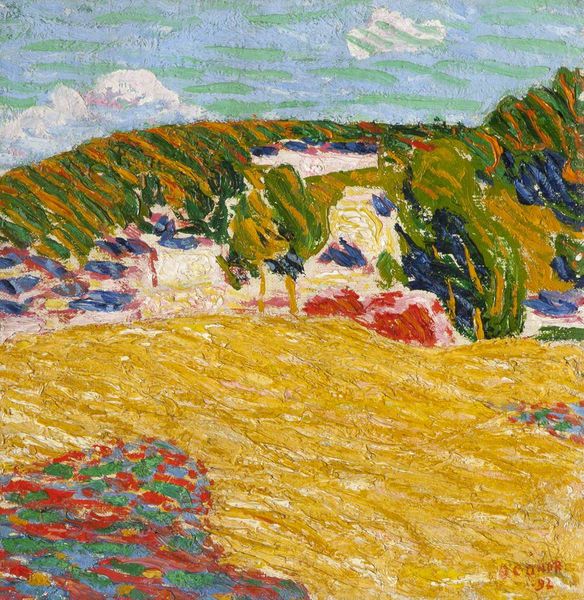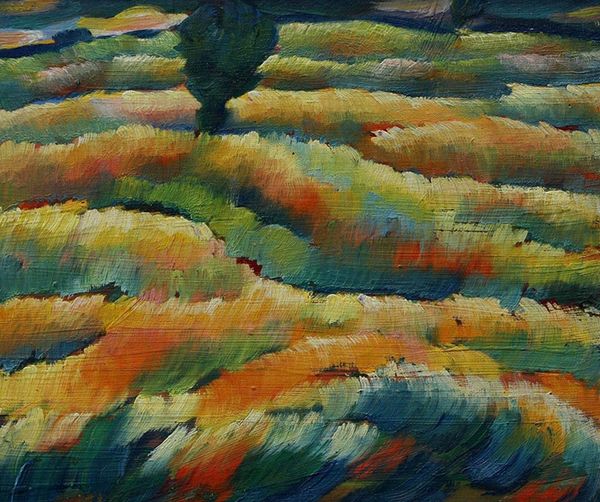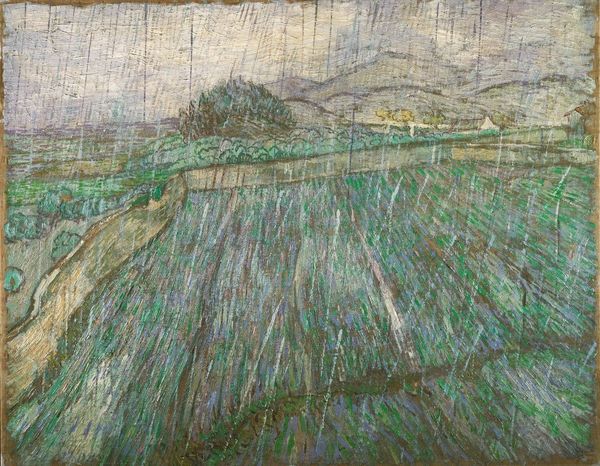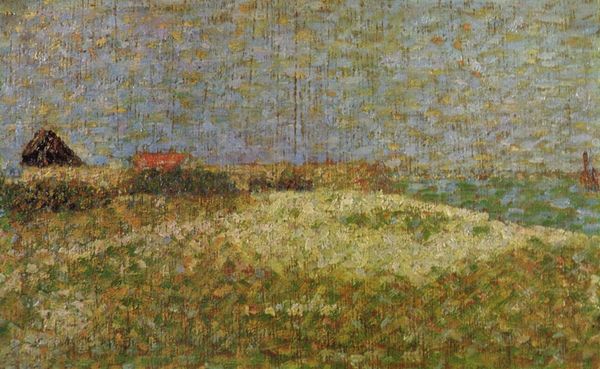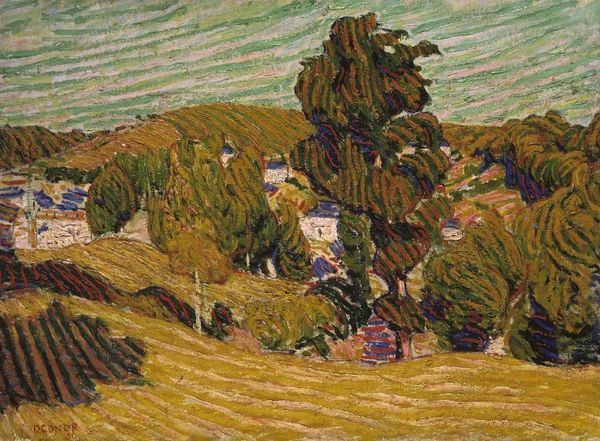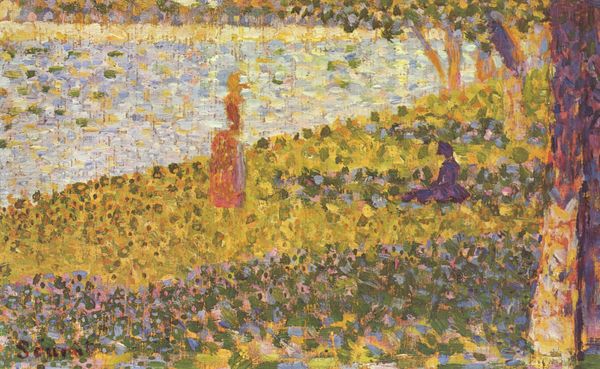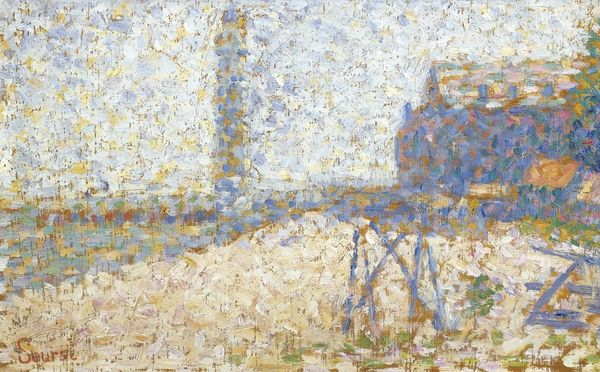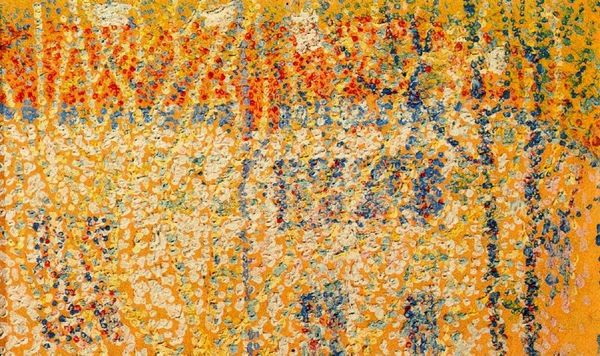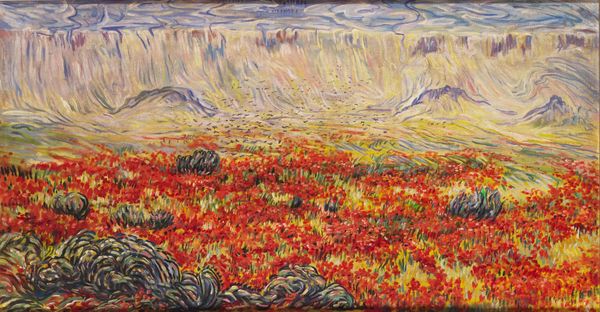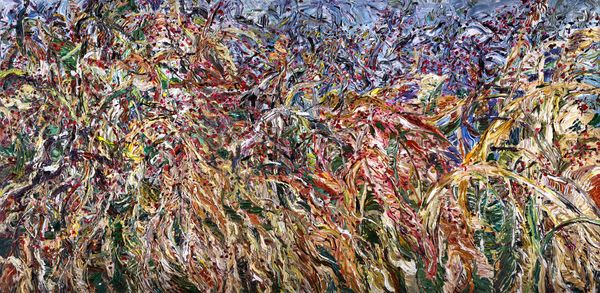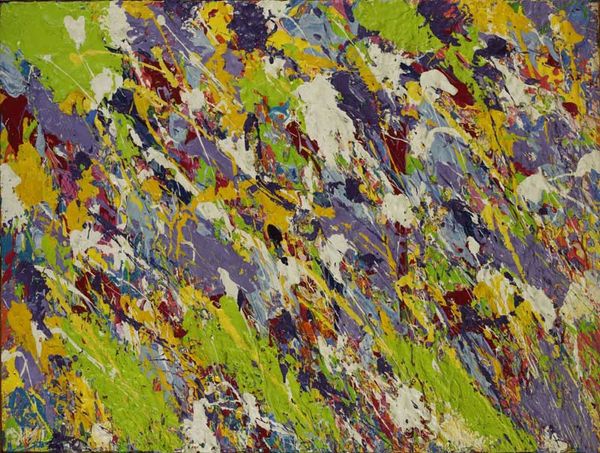
Copyright: Public Domain: Artvee
Curator: This is Christian Rohlfs’s “Kornpuppen im Kornfeld,” painted in 1907 using oil paints. What stands out to you most about this piece? Editor: It’s the texture, definitely the texture! It’s almost aggressively tactile. It looks like it’s made of countless little marks, almost like each brushstroke is fighting to be seen. I wonder, how does this treatment of the material contribute to the overall impact? Curator: Excellent observation. Think about the conditions of its production. The heavy impasto—the thick application of the oil paint itself—that isn't merely descriptive. It becomes performative. Consider the availability of paint at this time. Pigments were becoming increasingly industrialized, more readily available. Does this abundance play a role, do you think, in the expressive handling we see here? Editor: So, the industrial production of paint allows for this very visible display of labour and material? I hadn’t thought about it that way. I initially thought that was only related to landscape art... Curator: Precisely. We see a parallel between the mechanized processes providing the *means* for production – that is, the materials themselves, and the very visible act of *making* represented on the canvas. What does that visibility tell us, especially in 1907, a period defined by increasingly alienated labor in urban, industrial contexts? Editor: So, maybe Rohlfs is celebrating the labour of painting, of craft? He's not hiding the process; he’s flaunting it, almost celebrating the materiality itself. Curator: Exactly. Now consider what the landscape imagery itself. Can you tell what specific kind of wheat? What region do you think it came from? Is it presented as raw material ready to become industrial feedstocks or commodity? Or is Rohlfs using this field of wheat for expressive impact in brush strokes. Editor: This has changed how I’m going to approach artworks. It's more than just what the painting shows, but what the making reveals!
Comments
No comments
Be the first to comment and join the conversation on the ultimate creative platform.
